At the Massad Ayoob Group Reunion last week, one of the featured speakers was Marty Hayes, who came about three thousand miles from his home turf at the Firearms Academy of Seattle in Washington to teach a double action revolver class. A firearms instructor since 1977, he observed, “The revolver is becoming a lost art. Many instructors who came up in the last fifteen to twenty years haven’t developed revolver skills.” A champion revolver man in disciplines from Police Combat (PPC) to various action shooting sports, Marty often packs a Smith & Wesson .357 Magnum by choice. He demonstrated expertly with one of his favorites, a three-inch barrel Model 13.
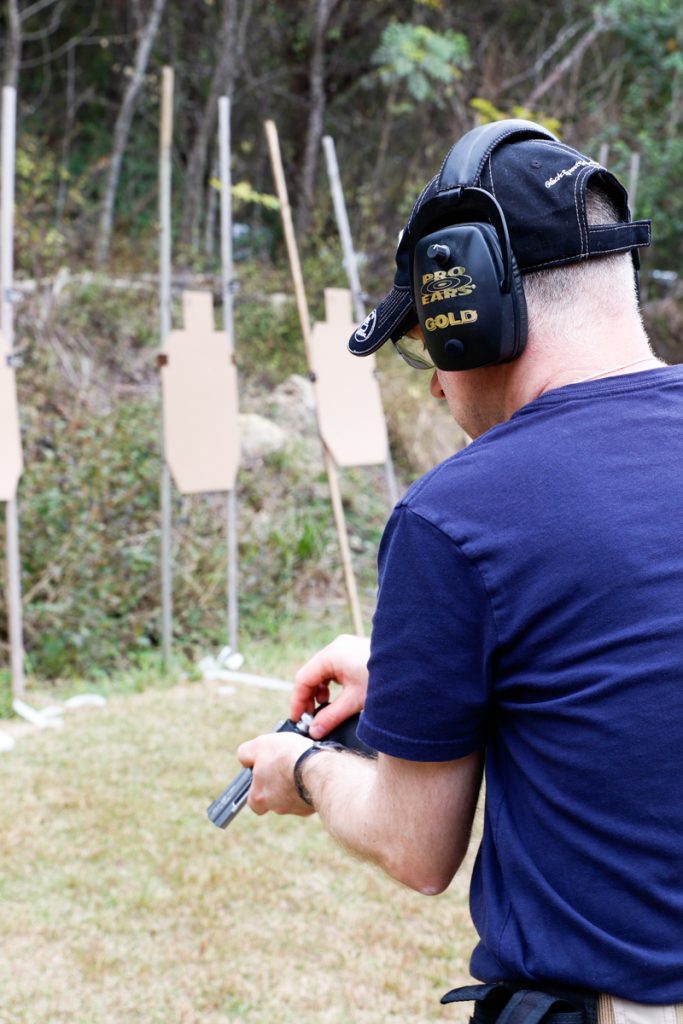
Pointing out advantages of simplicity of operation and ability to fire at press-contact defensive distance and more, he quickly addressed the double action revolver’s shortcomings. Fewer rounds than in most semi-automatics, to which he responds with tongue only partly in cheek, “Carry two! Then you’re balanced!” But, seriously, Marty showed the class several speed reloading techniques which help to level that side of the playing field. Harder recoil for the power level? “Yup. Use a really hard grasp.” Harder to shoot for many because of the longer, heavier trigger pull? True again, and that’s why Marty focused on trigger control in his four hour live fire presentation.
For serious business, Marty favors a single-stage straight-through pull on the long double action trigger, and explained why contacting the face of the trigger with the distal joint of the index finger affords more leverage and better control. He introduced them to the old two-stage pull, in which the finger brings the cylinder around to bolt lock with the hammer back, then squeezes off the last few pounds of pressure: basically, “trigger-cocking.” He recommended it only for long-range precision shots, particularly if the revolver shooter was having trouble with that kind of surgical shot placement at distances.
Hayes is also the founder of the Armed Citizens Legal Defense Network (www.armedcitizensnetwork.org), the first of the post-self defense support organizations. (Total disclosure: I believe in ACLDN so strongly that I’m on the Advisory Board.) Not insurance, but an educational and mutual support entity to handle legal bills if a justified use of force turns into an unmeritorious homicide or assault charge. Some 23 cases have now been handled, all with satisfactory outcomes. Firearms Academy of Seattle not only offers great training from Marty and his staff, but hosts outside instructors: I’ve taught there annually for about three decades, and this summer FAS will host the Pacific Northwest Rangemaster Tactical Conference, which is not to be missed.
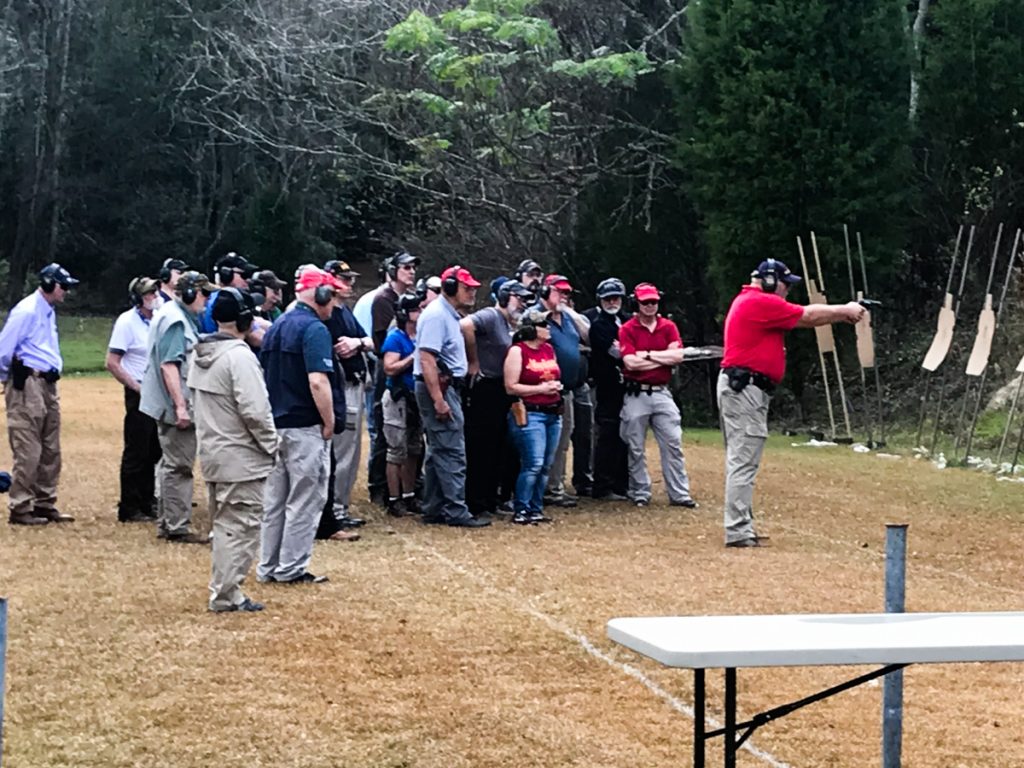
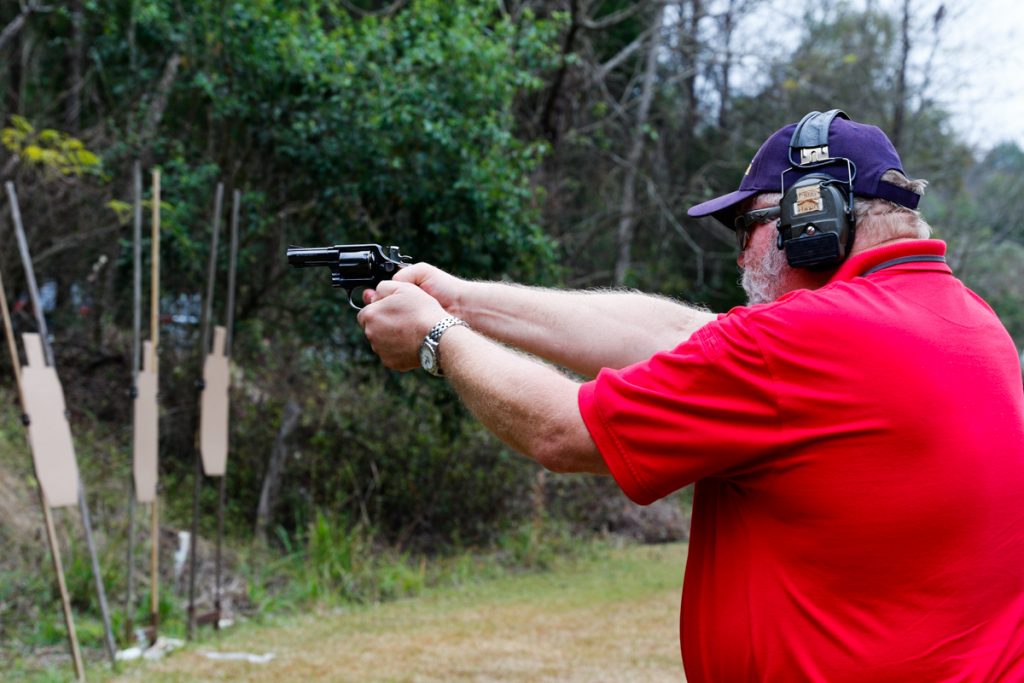
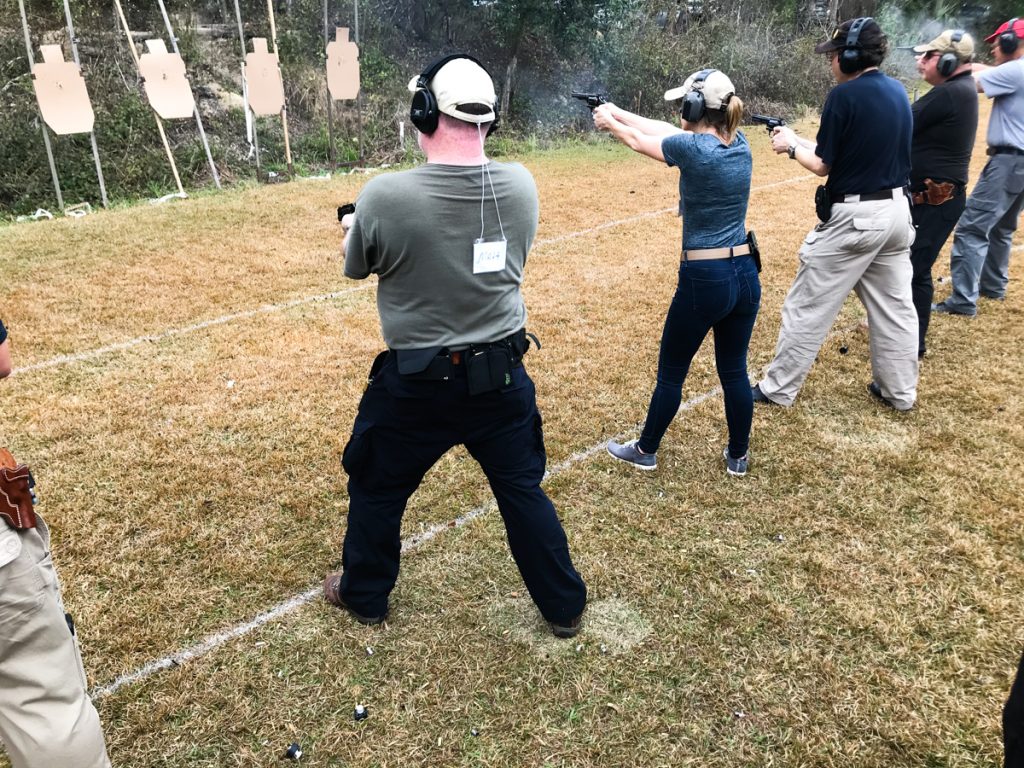


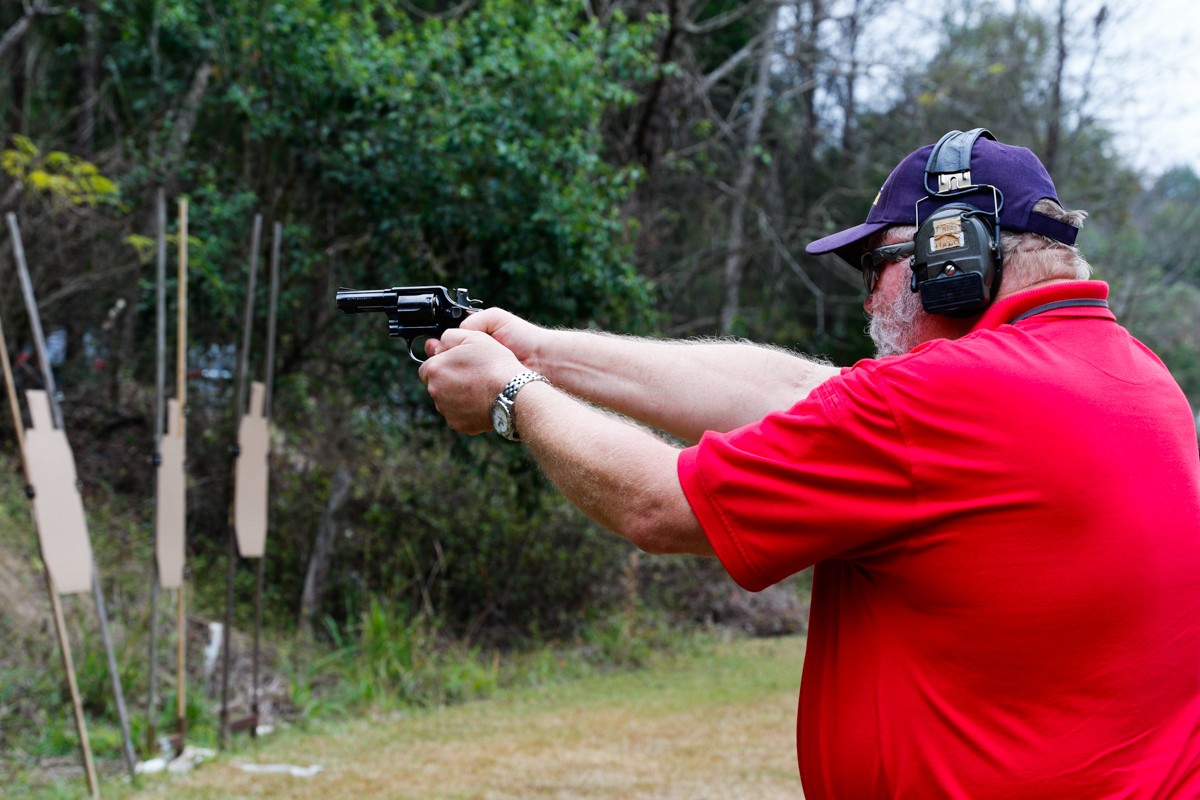
Who can attend these classes?
Are the classes ever offered in other states ie Idaho?
Paul, I offer my classes in Idaho every couple of years (CdA area), but can’t speak for Marty Hayes or Tom Givens. Check out their websites linked at this blog post and the one immediately preceding it. My own website is http://massadayoobgroup.com.
Marty did a great job in educating the class on the pros and cons of revolvers. There are good reasons to have both a semi auto and a revolver as part of your EDC.
I am a member of ACLDN, and one of the best reasons to join, even if only for a year, is that they send you several DVD’s with some great training information from Mas, Marty, and others on the legal aspects of the use of deadly force, recognizing threats and pre-attack indicators, etc. Being able to document what you knew prior to a defensive use of force is very valuable in determining the reasonableness of your actions, in explaining why you acted in the manner you did.
Hope everyone reading this blog has a joyous and very Merry Christmas! May you never need any of the knowledge and training we work hard to acquire!
Hope to see you this coming summer at FAS
Retired three years ago from a 37 year career in LE. Semi auto pistol became the safe queen and the Chief’s Special came out for daily EDC. Funny how you tend to travel in circles in life. Now back to carrying what I started out with many decades ago !!
Revolvers can have a special “cool factor” all their own, partly because of the cylinder returning around vs. an open-ended semi-auto magazine that doesn’t return, just hopefully sends shells up until it runs out, only to be replaced. Actor Brad Pitt, as the WWII Sherman tank commander Don “Wardaddy” Collier, in the great Hollywood film “Fury,” packs a .38 revolver with a lot of extra coolness. It has bone-looking grips, and is carried in the always-cool tanker shoulder holster. Don’s military .38 is just the relatively mild-but-accurate, reliable weapon for humanely eliminating captured spies and making the occasional Hollywood shot from inside the tank upward through the open turret hatch. I like my own tanker holster because it snugly carries Ruger SP101s, Blackhawks, and various semi-autos, as well.
Just love shooting my revolver’s in our monthly ICORE match’s. Lately it’s been a S&W 625 4″ barrel 45acp. The other choice is my Ruger Match Champion 357 and I have the cylinder cut to accept moon clips. All are shot in double action.
I started both of my LEO jobs with revolvers, an issued S&W 686 with Remington 125 grain .38+P loads and a personally owned S&W model 10 with Federal 158 grain .38+P loads. The second department allowed S&W revolvers in .45 ACP and my S&W model 10 was quickly replaced with a S&W model 25 with full lugged 4″ barrel which I carried for several months until I took the semi-auto class and started carrying a SIG 220 in .45 ACP for the next eight years. I don’t carry a revolver as a primary gun now but do pack a S&W model 37 in an ankle holster as a backup. Using revolver techniques that Mas taught me back in the 1980’s, I outshot all the officers in my first department and could outshoot most of the cops in my second agency who carried a 9mm, .40 S&W, or .45 ACP pistol, so don’t sell the revolver short. Sure, one will never beat a pistol in ease of reloading and speed, but hits are what really counts. If I had to carry a revolver now, I would pack my S&W 625 Mountain Gun without the internal (infernal) lock. My latest revolver purchase is a Ruger GP 100 in 10mm. I slicked up the action and it’s a great piece for someone who prefers the wheelgun. The only problem with the Ruger is that the moon clips hold the cartridges loosely which is great for snapping in the rounds and removing them, but don’t grip them firmly enough to line the cartridges up for a fast reload. Hopefully some company will make a moon clip which hold the .40 S&W and 10mm rounds as tightly as my S&W 625, which would make the GP 100 in 10mm a great combat revolver.
In my view, semi-automatic handguns have a definite advantage for military and police use. Their ability to be rapidly reloaded is a real advantage in a sustained firefight. In addition, the polymer-frame, service-size handguns have advantages in terms of cost, carry weight, and durability over a service-size revolver.
For the military, it was a “No-Brainer” to go to semi-automatic pistols which is why most military forces rapidly transitioned to them during the early 20th century.
For the police, it was not so clear-cut. The police in the United States largely clung to the revolver until the 1980’s. It is sometimes claimed that the transition to semi-automatics was driven by a “need” to deal with better armed criminals. This is total and complete B.S. American police were dealing with heavily-armed criminals back in the Great Depression Period and still largely kept using revolvers.
No, in my opinion, the police transition to semi-automatic handguns was driven by (A) the development of reliable, polymer framed versions and (B) the development of improved hollow-point ammo that functioned reliability in such pistols. With these developments (plus the associated carry-weight and cost advantages) this finally made the new semi-automatics a “No Brainer” for the police too.
For civilians, the choice is not so clear-cut. While there may be an odd-ball exception here or there, in general, civilians do not need sustained fire to defend themselves. The average civilian incident is resolved with 3 or less shots. Very often, simply showing the gun is enough to scare off a criminal. Current J-frame revolvers are as easy to carry as the tiny automatics and offer (in my opinion, again) reliability advantages over the tiny semi-autos.
My favorite carry gun for “routine” carry is a S&W Performance Center Model 642-1 in 38 Special +P. If I ever have to pull its trigger for self-defense, I am 100% certain it will go “BANG”. I can’t say the same for some of the small frame semi-auto’s that I own.
Unlike a soldier or a police officer, a civilian has no duty to confront his “threat” and “shoot it out” until victory is won. On the contrary, for a civilian, the handgun is simply a means to assist one to escape. If a civilian finds himself in a sustained “firefight” then he is probably doing something wrong. Therefore, for a civilian, I do not see the limited round capacity or the decreased reload speed of a revolver as significant disadvantages. I place the civilian in a different category from the military and police and disagree with the philosophy that civilian carry options should be guided by the selections made by the military or police. It is apples to oranges in my view.
That is why the future of the revolver is with civilian usage. It is still a good fit there. For the military and police, the revolver’s day is over.
TN_MAN: good comments as usual. I do know of one Army veteran of Afghanistan combat, though, who became disenchanted with his issue 9mm pistol after a near failure of military ball ammo to stop an attacker. The soldier then bought a Ruger SP101 in .357 as soon as possible for use as his primary handgun.
Strategic Steve,
I’ve read enough of Jeff Cooper to know what he would think of the situation you describe. He would say we learned this lesson in about 1898 fighting against Moro tribesmen in the Philippines. .38 caliber bullets (which are the same diameter as 9mm, I think) didn’t reliably stop the Moros. They switched to .45 Colt and that worked a lot better.
Our warriors deserve only the best equipment, not the cheapest.
In retirement I got my hands on a revolver I’ve coveted for nearly 50 years: a round butt, heavy barrel K frame .38 Spl. After rehab, (the gun, not me) it’s been a joy. A good DA revolver is an excellent way to learn to shoot handguns. Yes, I do carry it in certain circumstances, it can be a really effective tool.
While the vast majority of bad person vs good person will be resolved without firing a shot, one can’t count on that. While the private citizen shootings Tom Givens has collected have been 2-3 shots, I believe that’s in a one on one situation with many being storekeeper vs robber. That may not be the situation you find yourself in.
While one hopes to be vigilant enough to spot a potential threat-and wise enough to avoid the situation-before it becomes an actual threat, that isn’t necessarily going to be the case. If it does escalate to the point of an actual gunfight, you have a situation you most likely do not fully understand. There is no time out, mulligan, or do over in the situation. It’s win or get badly hurt, crippled for life or die. You also have to realize that even if you “win”, you may be badly hurt, crippled for life or dead. Multiple opponents-or one opponent who won’t quit despite mortal wounds- can result in a sustained gunfight.
The law enforcement change over to semi-automatics came before the poly framed guns and was largely driven by the fact that they’re generally easier to shoot well than revolvers. Remember we’re talking stock guns in both cases. When my former employer transitioned to semis, the “Qualification Enhancement Program” was no longer needed. Everyone’s score’s went up.
Don’t get me wrong, the revolver can be an effective tool and a good choice. But you have to make the commitment to train so that you can use it effectively. The revolver does have one significant advantage: it’s much easier to do dry fire practice. 30 or so dry fire cycles with each hand once of twice a week can do wonders for your ability.
@ WR Moore – “The law enforcement change over to semi-automatics came before the poly framed guns and was largely driven by the fact that they’re generally easier to shoot well than revolvers.”
I don’t entirely agree. Certainly, a few police agencies did adopt semi-auto’s early. For example, the Illinois State Police adopted the S&W Model 39 in 1967. Note that, since the Model 39 had an aluminum alloy frame, it was lightweight like the later polymer pistols.
The real change-over trend, however, was given a boost when the US Army adopted the M9 (in 9mm) in 1985. Note that the M9 also has an alloy frame. The Glock polymer frame pistol was developed in Europe around 1980 to 1982. It started selling in America in 1986. The Glock went on to capture about 65% (so I have read) of the American Law-enforcement market.
So, my point was that these newer semi-auto’s (whether they use an alloy frame or polymer frame) have a advantage in carry weight over a service-size, steel-frame revolver. Furthermore, polymer frames have a cost advantage over metal frame firearms.
So, polymer frame firearms like the Glock hit the market with excellent timing. The revolution in improved ammunition occurred in the same timeframe spurred by events like the 1986 Miami Shootout. As you know, the FBI used this shootout to develop its test protocol and push manufacturers for better ammo.
All these factors created a “Perfect Storm” of events that pushed the revolver aside and elevated the polymer-frame semi-auto to its dominate position in the police market of today.
Police Agencies saw the “writing on the wall” and started pushing for a new generation of handguns for serving police officers. However, they knew that the “Bean Counters” who control the “Purse Strings” would not be swayed by information about improved handgun frame and ammunition technology. So, they fell back upon a “Safety” argument to promote the release of funds. They cooked up an argument that today’s criminals are “better armed” then criminals of the past (conveniently forgetting that Depression Era gangsters carried 1911’s, Thompson Sub-machine guns and BARS all while wearing early versions of bullet-proof vests!) and fed the Bean Counters the tale that new arms are a necessity to prevent the police from being outgunned.
As Mark Twain noted: “A lie can travel around the World while the truth is tying its shoe laces.” The falsehood did the trick and the Bean Counters released the funds to pay for the new generation of polymer or alloy-frame pistols and the new improved ammunition. I guess this was viewed as a “White Lie” by the ones who told it since the new pistols are superior for police work.
In any event, the strategy worked. Within a decade or so (1985 to about 2000), the transition from revolvers to semi-auto’s, for police work, occurred Nationwide. As I noted above, advances in lightweight frame technology and improved bullet designs made the choice of a semi-auto over the old revolver a “No Brainer”. Add in a few well-chosen lies to pry the funds from the clutches of the Bean Counters and the Thing was Done! 🙂
Let’s look at this again. First, there was the officer survival issue: highly visible cases where LEO’s were killed while reloading revolvers. You’ve touched on, incorrectly, a/the central issue to the change: budget. I doubt those not involved understand the true costs of training. It goes much beyond just the ammunition expended. Given the recognized need for greatly expanded training on the dynamics of violence and firearms skills, wear and tear on the firearms and increased maintenance costs with revolvers became major issues. The semi-autos are cheaper to buy and maintain as they’re much more simple mechanically and few, if any parts need fitting. Then there are other issues, including the costs of freeing up personnel for training and covering the shifts.
Later, the cheaper poly guns kicked most of the metal framed semi’s to the curb. Frankly, most are better suited to their intended purpose than many of the metal framed items.
You’re welcome to your viewpoint. We can agree to disagree on it.
Some peace officers actually prefer a heavy, long-barreled revolver because of its efficacy as a club, a la Wyatt Earp. This tradition of utilizing heavier weight as a force-multiplier goes back to the day of the introduction of the boat-anchor Walker Colt, and its special role in equine-mounted attacks.
Another advantage of the revolver is said that it is less problematic than a semi-auto when firing out through the ports of an armored truck. The idea being that the edges of the firing ports tend to interfere with the slides on semi-autos.
Here is an article, from the American COP website, that touches upon this subject:
https://americancopmagazine.com/legacy-when-cops-carried-revolvers/
Here are some quotes from this article that seem significant to me:
“By the early 1990s, most US law enforcement agencies had transitioned from revolvers to semi-autos.”
“Influencing factors leading to law enforcement’s adoption of the semi-auto include the 1986 FBI Miami shootout, the US military’s transition to the Beretta 9mm and increased violence by drug traffickers. However, there is some evidence American law enforcement was already sluggishly progressing toward semi-autos.”
Note that these quotes are in harmony with the observations that I made in my previous comments. For example, I placed the transition time-frame as between 1985 and 2000. I also had mentioned the move of the U.S. Military to the Beretta 9mm (AKA M9) and the 1986 Miami Shootout as “influencing factors”.
The “sluggish progress” toward the semi-auto was illustrated by a few cases of early adoption such as the Illinois State Police example that I gave. As for the “increased violence by drug traffickers”, well, that is part of the “safety” argument that was used, as I also noted, to obtain funding to pay for the transition from revolvers to semi-autos and to improved ammunition. An argument more grounded in propaganda than in reality, in my view, but one used for the purpose of getting the funding.
While everyone is entitled to their own opinions, I hope that I show that there is some concurrence in my views from Law Enforcement resources such as American COP. In other words, I have some basis, in fact, for my ideas.
For both the military and civilians, including the police, the high capacity polymer framed 9mm pistol is the most logical choice. It’s lightweight, relatively inexpensive, and easy and cheap to shoot. It is not the best gun for some people, but the best choice for most. The majority of people who carry firearms do not want a heavy piece that recoils a lot and they want lots of ammunition available as most don’t carry a reload. The 9x19mm round makes a lot of sense as it has low recoil making it easy to shoot and the ammunition is fairly cheap compared to other calibers. The 9mm being a less than optimum caliber for stopping an opponent, it needs as many rounds as possible to do the job which fewer larger cartridges can accomplish. For the military and police, something which is cheap and easy to train their members with is of paramount importance, effectiveness not so much. A dedicated shooter can protect him/herself with either pistol or revolver in a decent caliber and will carry extra ammunition, but we’re talking about less than 10% of the folks packing heat on the streets, including the police. The down side is that with lots of ammo in their pistols, there is an urge among the average, less than well trained people to Spray & Pray while shooting and those projectiles that don’t hit the target may cause injuries to innocent bystanders.
Revolvers conform to the KISS principle. If I lived in a free state, I would carry a typical snubnose revolver in a holster made to fit inside my right front pocket. The holster is shaped to look like I’m carrying a wallet in there. Sure beats a belly band in hot weather.
Also, I like how easy it is to clean my revolvers. Remove the grips so I don’t get oil on them, and swing out the cylinder.
Overnight I recalled one area where the revolver does seem to have an advantage: reloading. OK, for average folks the revolver will take about twice the time to reload than the semi-auto does. But I observed something during years on the range. The less than dedicated to training revolver shooters seem to realize they need to reload faster than their semi-auto armed counterparts with the same lack of dedication.
While formal course stages may have been providing cues to the revolver shooters, there seem to be surprising number of folks who, when their semi don’t go bang no more, keep pulling the trigger trying to correct the issue. This is followed by staring at the gun, realizing the slide is locked back and then starting the reload. This seems to happen even when the verbal instructions for the stage include the warning that they’re going to have to reload.
So while the revolver reload may be slower to perform, if there is no wasted time before starting the reload, it may actually come out even if not faster. Practice/training is your friend.
One thing I’ve found lacking in many/most revolver courses is dealing with malfunction clearance. We had to learn on our own, but no one seemed to write anything down.
So, FWIW: if the trigger won’t move, there are a lot of reasons this could happen. The immediate action drill is: get a thumb on the hammer spur and give it a hearty yank. Ir that doesn’t work (rotate the cylinder), go to your Plan B (hopefully backup gun). Don’t have a hammer spur: Plan B.
If you typically eject/extract empties with your thumb and the extracter rod won’t move either slap the rod or whack it against any available surface. Again, if this doesn’t work go to Plan B.
WR Moore,
Speed loaders are fast, but moon clips are even faster. And when you eject moon-clipped brass, they all come out together. Watch Jerry Miculek.
Comments are closed.